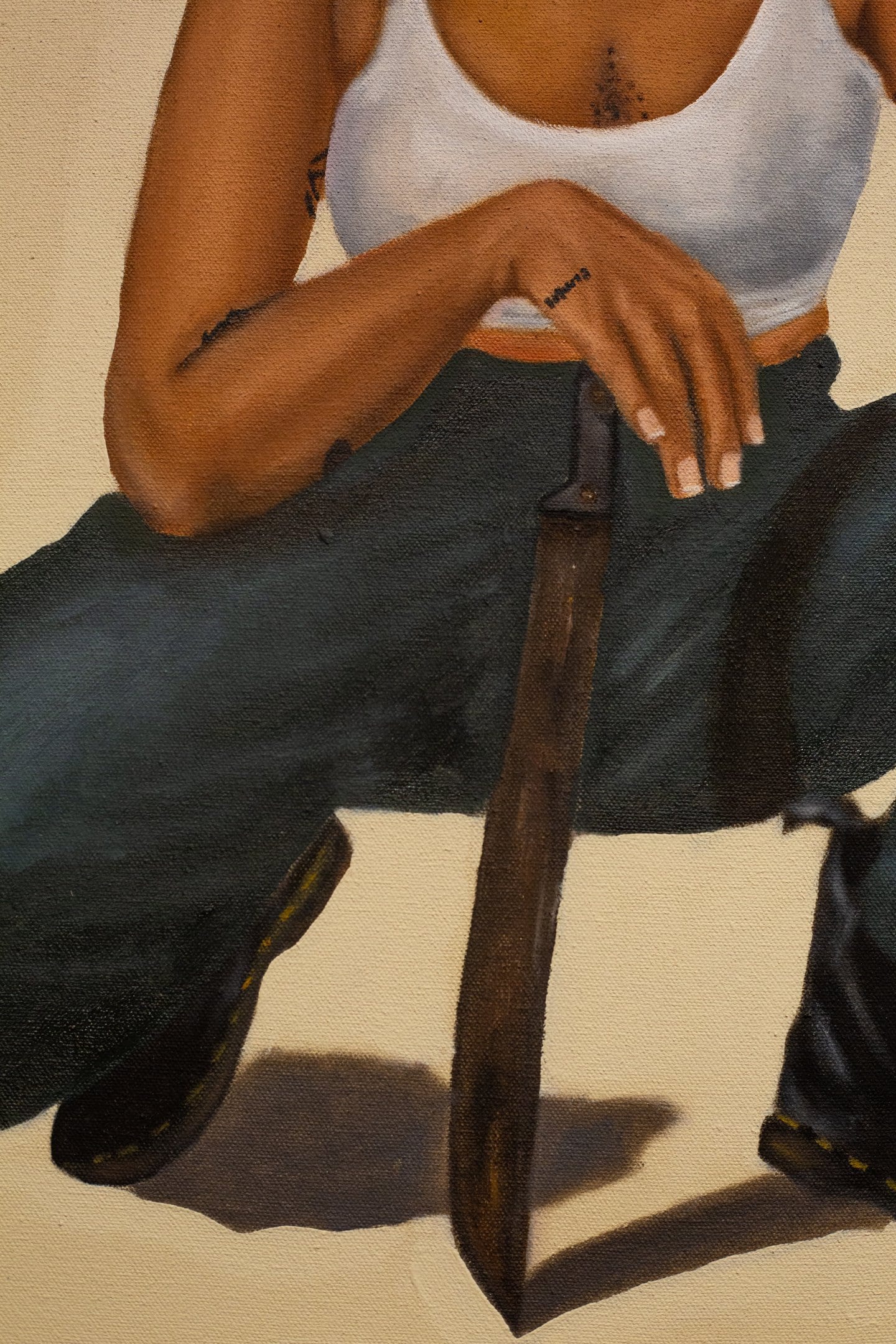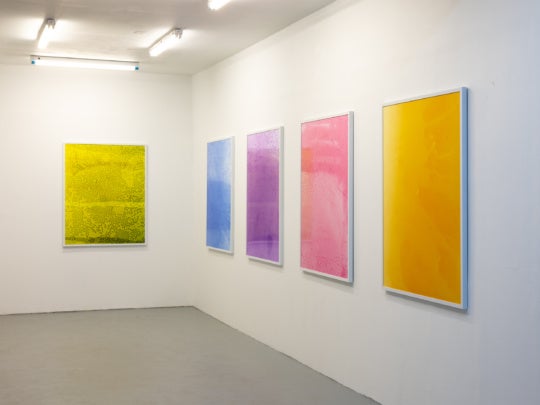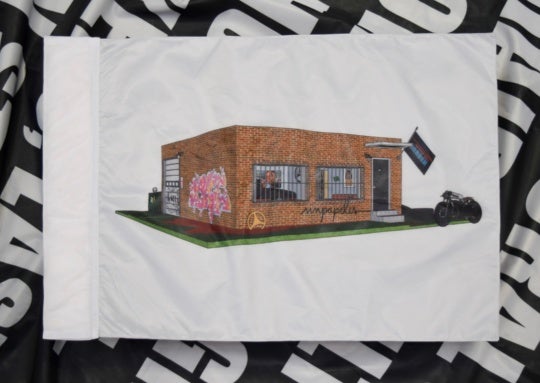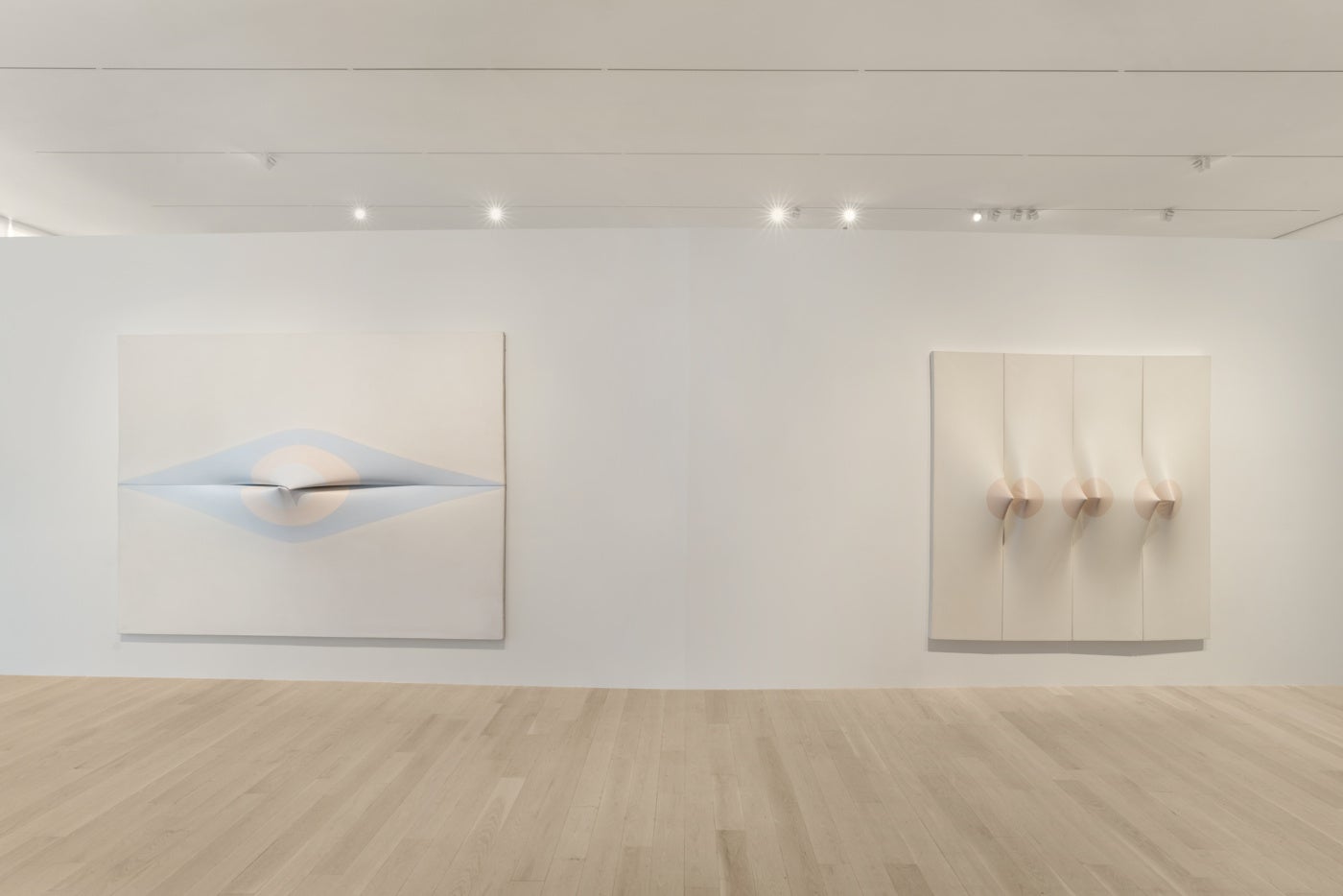
The world is ever-changing, yet much of the time the events that comprise history are cyclical. As humans, we are repeatedly transforming ourselves, at times in response to the society that surrounds us. This is particularly true for Cuban-born, Puerto Rican-based artist Zilia Sánchez. On view at the Institute of Contemporary Art, Miami until October 13th, her wide-ranging oeuvre is mapped out across three rooms, highlighting several distinct periods in her seventy-year career. Despite the stark differences between the pieces on display in the exhibition, Topologías/Topologies illustrates decades of experimentation in which Sánchez utilized an extensive range of media to engage with varied themes including the election of Fulgencio Batista, Afro-Caribbean religions, gender, and the female body.
Though the artist has long been celebrated for her structured canvases, her preceding work highlights her connection to and interest in Afro-Caribbean religions. Gathered for the first time as a group, several of the oil and acrylic paintings come from her series Afrocubanos, produced between 1956 and 1958 during the latter part of the Cuban Revolution. Triangles, pentagons, and ovals cover the canvas, creating figures resembling humans against a gray, black, and yellow palette. They feature elements central to African cultures that have been instrumental in the emergence of religions like Palo, resulting from a syncretism between the Kongo religion, Christianity, and Spiritism. Unlike the Topologia series, in Afrocubanos, Sánchez relies on sharp lines and elemental shapes, with curves being sparse.
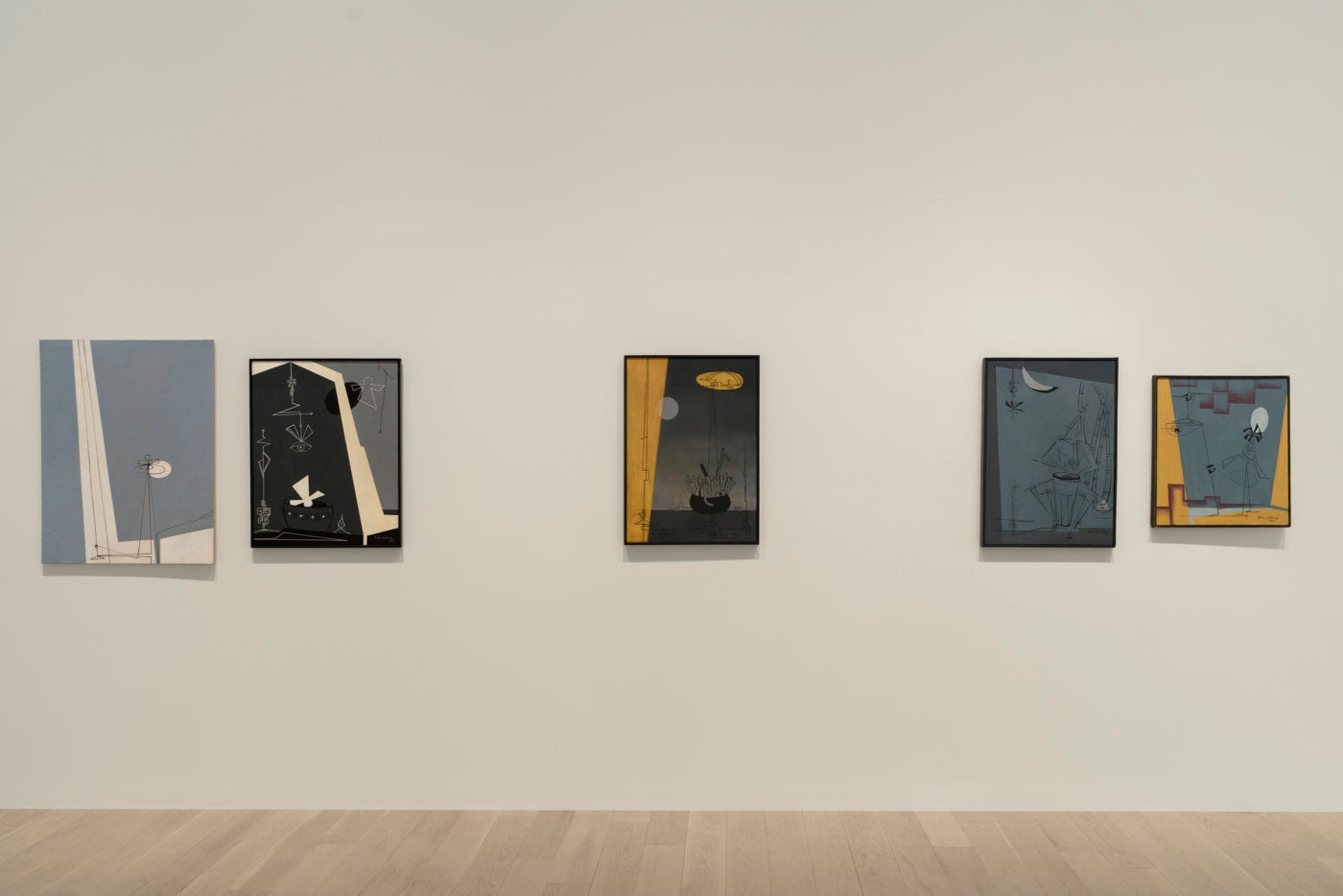
While upon first glance the paintings may appear simplistic to those without a contextual understanding of Caribbean Afro-syncretic spiritual practices (not unlike the Santeria that Cuba is known for), the symbols and layers of lines that cross over one another depict moments of ritual. One of the most prominent tokens is a nganga or prenda, typically an iron cauldron that holds objects like sticks, rocks, and plants. These objects are considered to be a material manifestation of an ancestral or nature deity imbued with the powers of spirits or Orishas.
As exemplified in Untitled (1957), from the series “Afrocubanos” (Afro-Cubans), (1957), the prenda overflows with Sánchez’s stylized illustrations of these objects. Peeking out of the cauldron is an eye, traditionally viewed in many spiritual practices as representing a gateway into the soul. Within the series, the eye can be seen as taking on the role of protection against evil, much like the Eye of Providence. In this way, Sánchez’s work in the series can be viewed as a protection of sorts. With the primary focus of this series set on Afro-syncretic religions, the eye protects not only those who practice, but also those who don’t fit into the colonial conservative mold of what Cubans are expected to be. In engaging with the diverse cultural background of Cuba that is at times overlooked or misunderstood, such as African social and spiritual retentions brought over from Africa by enslaved peoples, the artist is intentionally protecting these histories.
Viewing pieces from the series online is somewhat misleading and cannot properly convey their immensity and presence. On the second floor of the museum, visitors are greeted by Sánchez’s expansive paintings rendered in muted acrylic colors. From a distance, they take on a relatively flat appearance, yet as you get closer and examine the work from numerous angles, they spring to life. The sharp angles of the constructed pieces in the series like Topología erótica (Erotic Topology) (1970), mimic the pointed angles and jutting lines seen in pieces like Afrocubano (Afro-Cuban) (1957).
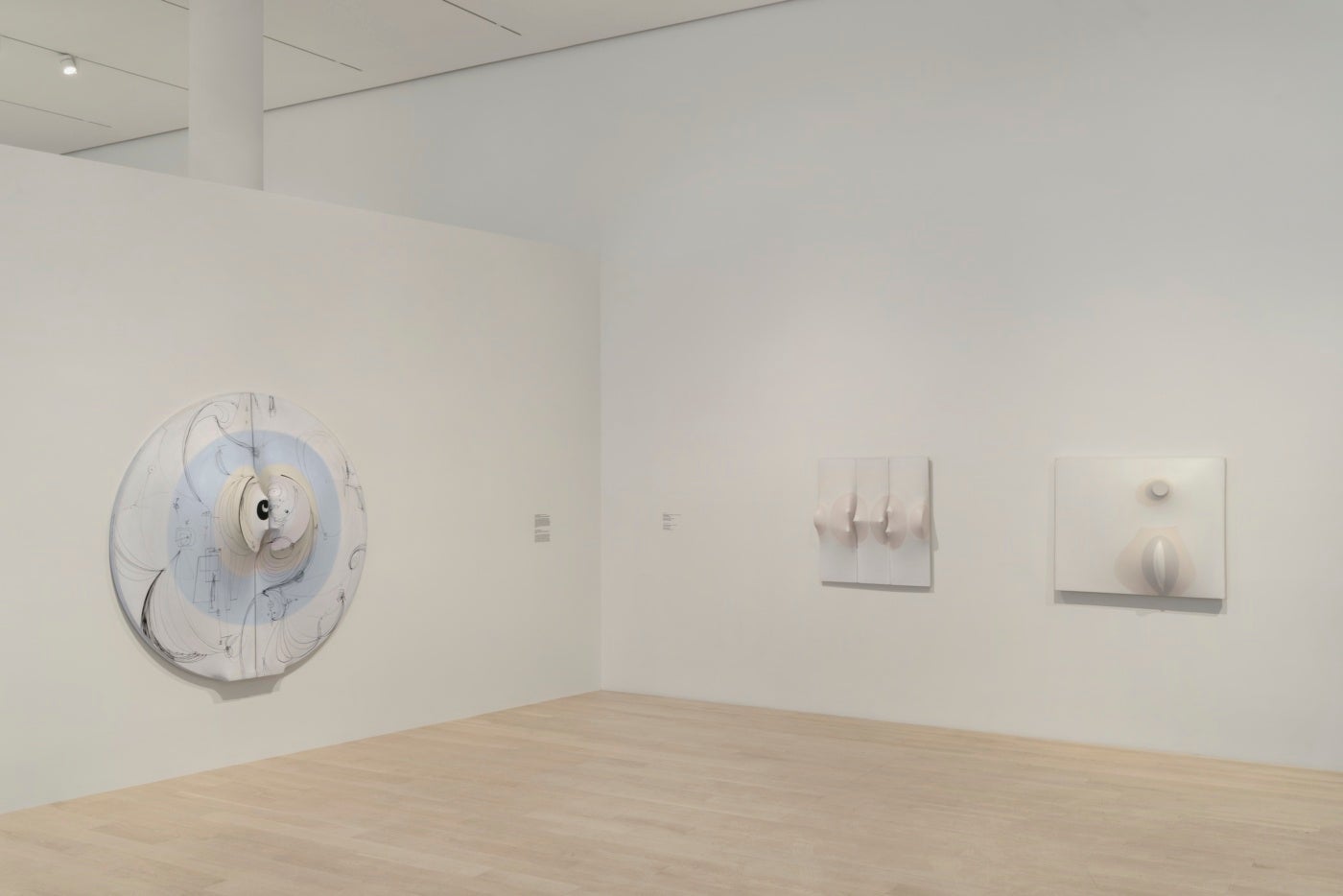
A stand-out piece that brings together elements from various paintings in the exhibition is Lunar con tatuaje (Moon with Tattoo), (1968-69). The imposing acrylic and ink painting employs Sanchez’s famed constructed canvas with this piece taking on the shape of a circle, formed by two halves. Against the white of the canvas, the artist painted a gray circle, with a smaller light pink circle inside. It feels like one of the most personal in the exhibition. In its shape and placement of the painting, Sánchez gestures to the human figure through its resemblance to a breast. In alluding to the female form through this piece that also references her motherland of Cuba and the birth of her nephew, the work is commenting on gender and identity formation. Specifically, she speaks to the societal role that women play as mothers and the varying ways gender can be practiced. There is a supposition that chief among women’s goals should be that of marriage and children. This belief is colonially rooted in most Caribbean cultures, with the traditional concept of marriage historically resembling a business transaction involving property and reproduction. For women, marriage meant renouncing one’s rights as an individual and complying with their husband on all matters. Sánchez’s identity as a queer, Latin American woman transgresses this and what is socially accepted and expected of her.
In the last room of the exhibition are paintings like Sucesión (Succession) (1968), and Ecuación (Equation) (1963) that Sánchez created upon arriving in New York City after leaving Cuba in 1960. The selected pieces from this period feature a darker color palette, setting them apart from the rest of the exhibition. A departure from the soft and muted colors of her Topología series and the limited primary hues of work from “Afrocubanos,” these pieces incorporate materials like sawdust, resin, and wax. Much like Lunar (1980), which features a map of Cuba as seen from an airplane, these pieces can be viewed as referencing the earth found on the island, the site of her birth.
Sánchez’s identity as a queer, Latin American woman transgresses this and what is socially accepted and expected of her.
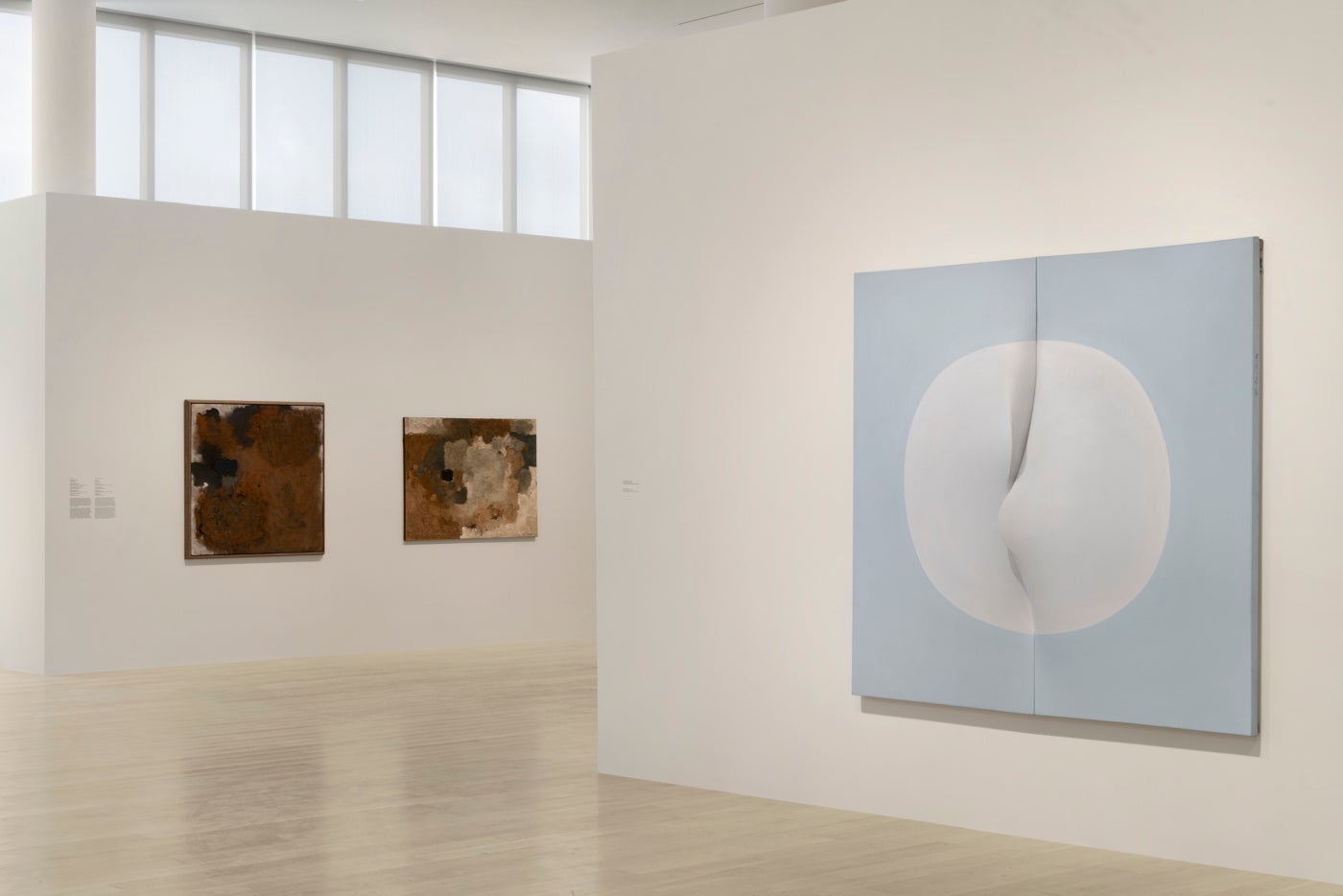
There is a common thread connecting the pieces. Sánchez’s artistic practice, regardless of the medium or technique employed, focuses on birth, roots, and spirit. In Sanchez’s oeuvre, from the intentionality behind the structures of her “Topología” series to spotlighting the African cultural practices present in Cuba (as seen in her “Afrocubanos” paintings), she centers the reproducing body from which all is born. It is a reminder of all that it is capable of birthing and creating, though her work doesn’t just speak to the physical act of birthing—it is also, remarks on rebirth. Each era represented in the exhibition symbolizes how Sánchez regularly reinvents herself through the shifting tides in her life, reflecting upon those physical shifts occurring in the spaces she inhabits.

